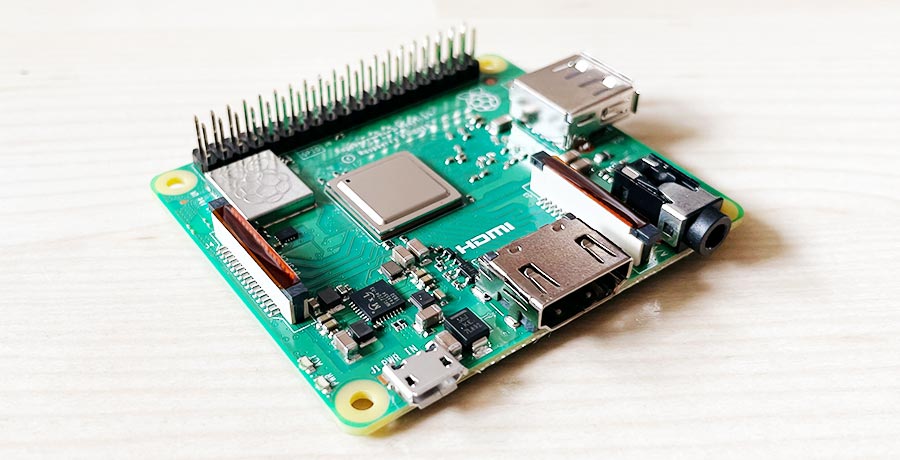The Raspberry Pi 3 Model A+, the unknown entity
Recently, I had a very interesting "aha" moment while developing the new control for drop photography. Maybe it was only new for me, but in case it is not, I still want to report about it briefly.
In the past years I have done some more or less big projects with a Raspberry Pi. The decision which model to use was always very easy. The Raspberry Pi 4 is very powerful, but completely oversized for my needs. And since I don't want to use any old hardware, apart from the Raspberry Pi Zero W, only the Raspberry Pi 3 Model B+ remains. At least that's what I thought.

While searching for info about the Raspberry Pi Touch Display, I eventually landed on the Raspberry website. While scrolling through the products, I noticed the Raspberry Pi 3 Model A+. I could not believe my eyes. This is exactly what I need. I almost always disable the USB/LAN chip and also the HDMI output, because I only need the WLAN and the GPIO ports. Why I don't use the Raspberry Pi Zero W or even an Arduino, I will explain in a moment. Before that, a small overview to clarify the differences between the models:
| Arduino Uno | Zero W | 3 Mod. A+ | 3 Mod. B+ | |
|---|---|---|---|---|
| Length | 68,6 mm | 65,0 mm | 65,0 mm | 85,6 mm |
| Width | 53,3 mm | 30,0 mm | 56,0 mm | 56,0 mm |
| Height | 12,5 mm | 5,0 mm | 12,0 mm | 20,0 mm |
| CPU | ATmega328P (8 Bit) | ARMv6 (32 Bit) | Armv8 (64 Bit) | Armv8 (64 Bit) |
| Cores | 1 | 1 | 4 | 4 |
| Clock | 16 MHz | 1000 MHz | 1400 MHz | 1400 MHz |
| RAM | 32 KB Flash + 2 KB SRAM | 512 MB | 512 MB | 1024 MB |
| Ethernet | - | - | - | 10/100/1000 MBit/s |
| WLAN | - | 2,4 GHz b/g/n | 2,4 u. 5 GHz ac | 2,4 u. 5 GHz ac |
| Power | 0.29 W | 0,5–0,7 W | max. 4,24 W | max. 7 W |
| USB 2.0 | 1 | 1 OTG | 1 | 4 |
| Interfaces | GPIO (14 Digital, 6 Analog), SPI, ICSP, I²C | GPIO (26 Digital), CSI, I²C | GPIO (26 Digital), CSI, DSI, I²C | GPIO (26 Digital), CSI, DSI, I²C |
| Price | 22 Euro | 12 Euro | 25 Euro | 38 Euro |
The suitable hardware depends, of course, on the respective requirements. For the drop controller, for example, the following criteria were important:
- Programmable in a high-level language (Python, Java)
- DSI interface
- Low power consumption
- Cost
- WLAN, ideally 5 GHz
- Low space requirement
In the table above, the values that most closely meet the criteria are marked in color. And as you can see, the Raspberry Pi 3 Model A+ meets all of them. And in my other projects, the criteria were quite similar. I just can't believe that so many hobbyists need the Ethernet and all 4 USB ports. But as I said, of course the requirements depend on the project. Still, it's a mystery to me why the Pi 3 Model A+ is so unknown. A good example is the image search on Google. The search term Raspberry returns almost exclusively the B+ models. Even otherwise, I haven't come across any project that uses the Raspberry Pi 3 Model A+. And that, although it has been available for purchase since the end of 2018.
In any case, I will only use the Pi 3 Model A+ in the future, as long as my requirements do not change. It is a cheap and space-saving alternative to the Raspberry Pi 3 Model B+, if you can live without Ethernet and get by with one USB 2.0 port.